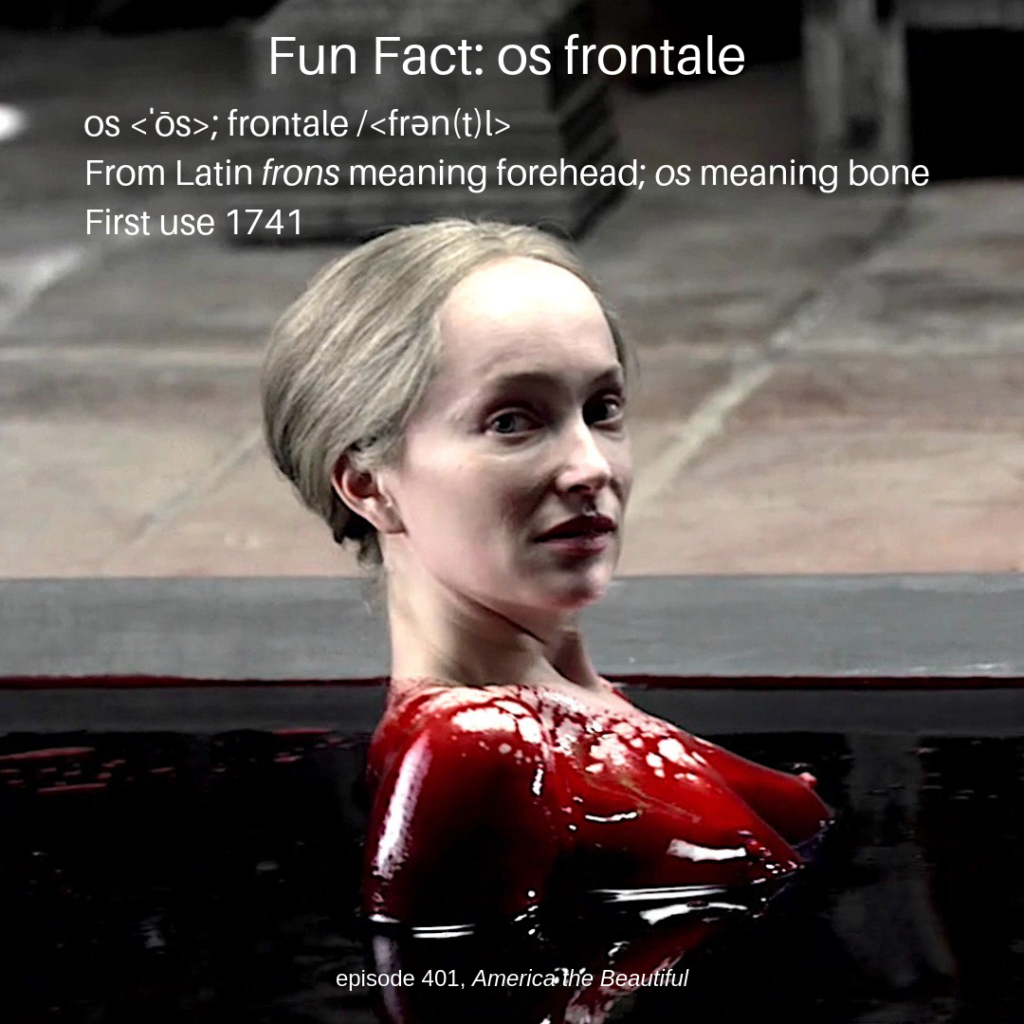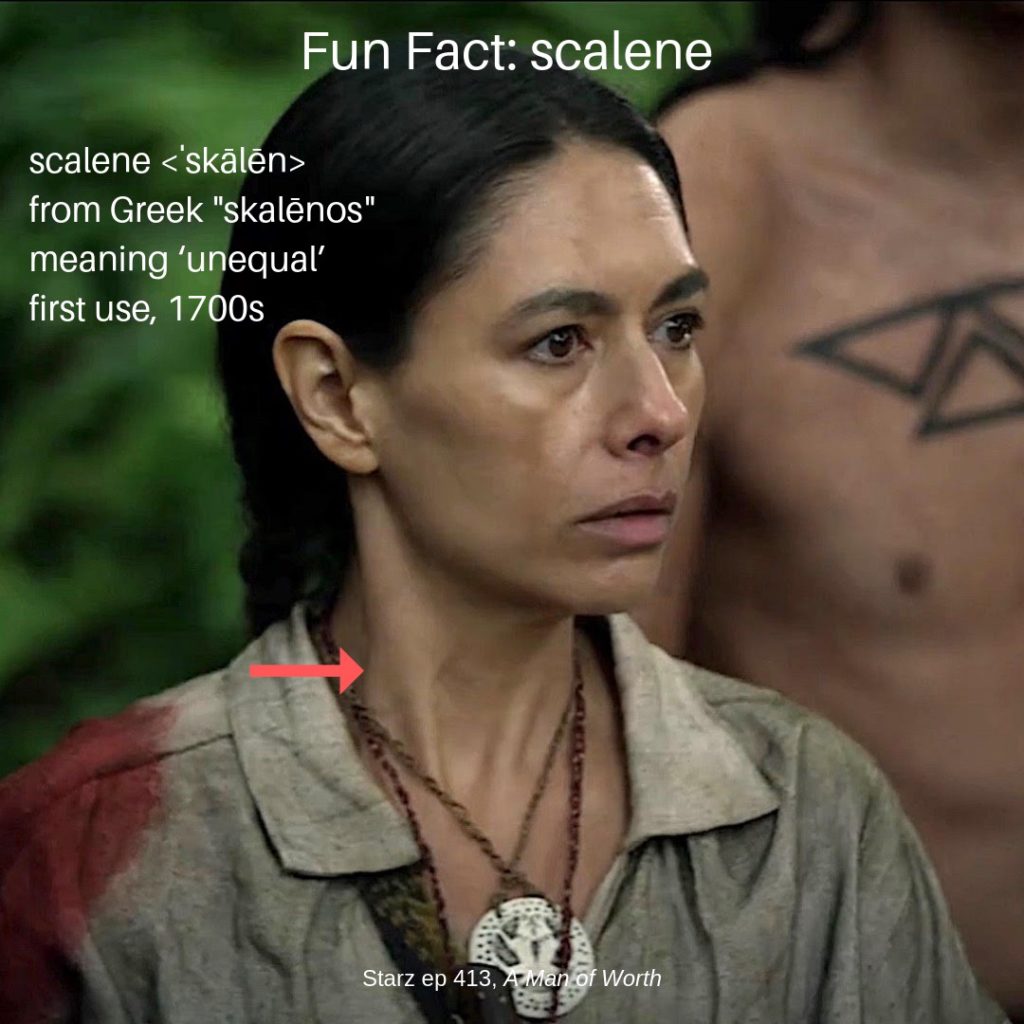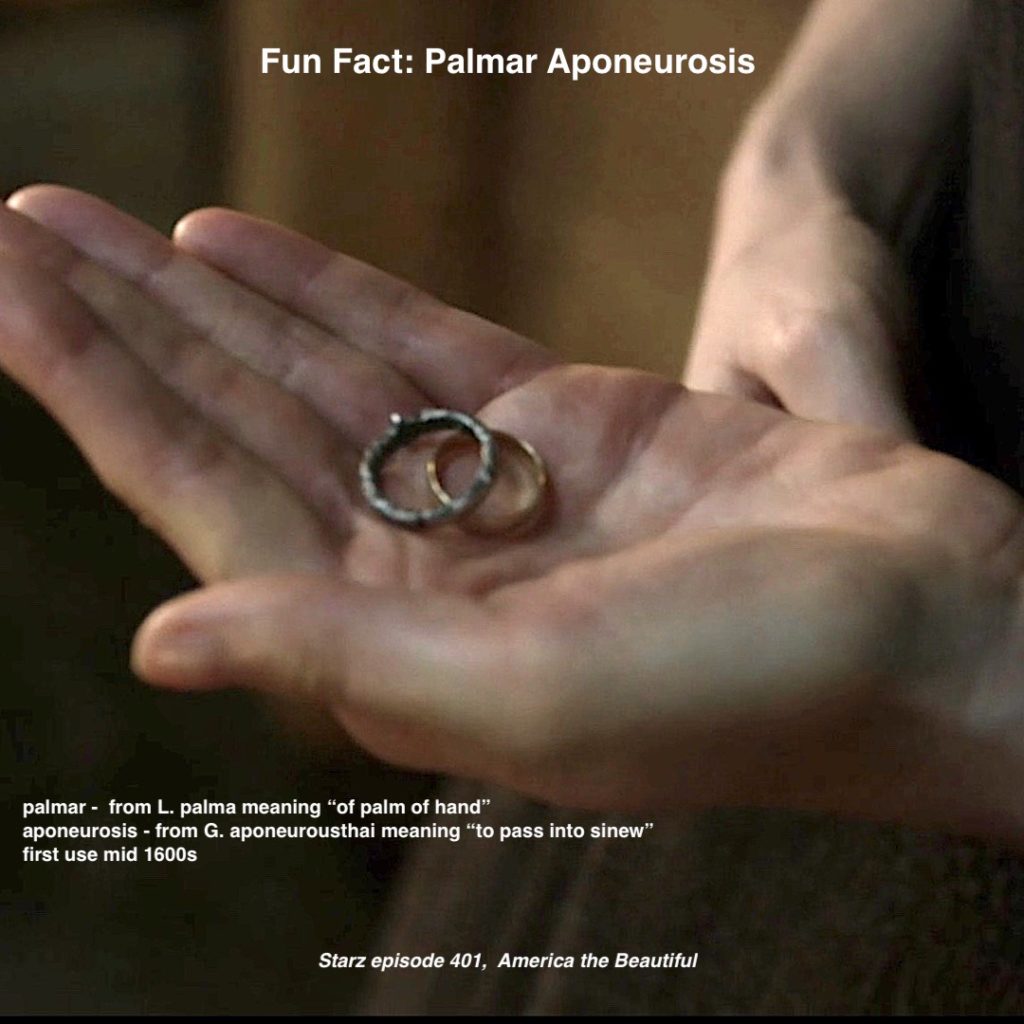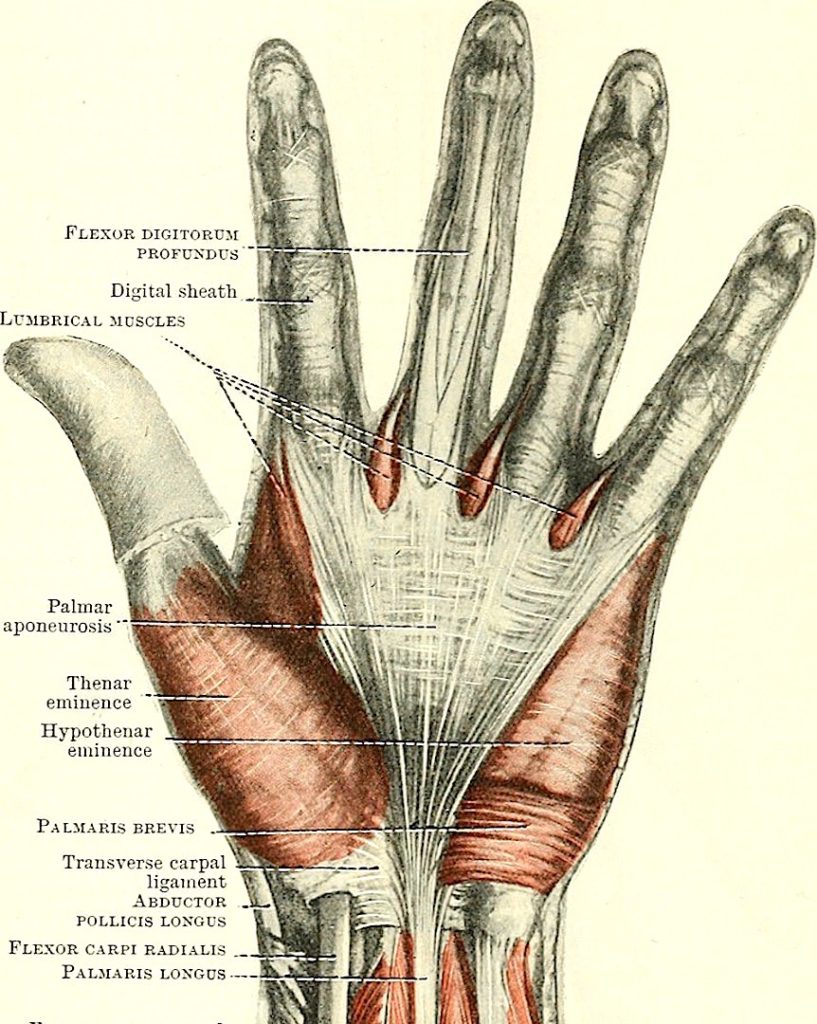
Anatomy Def: Os frontale/frontal bone is a skull bone which forms the forehead and the roofs of eye sockets and of nasal cavities.
Outlander Def: Saucy, scary Geillis haunts Ian at Hayes’ graveside! Her clear, high forehead follows her gaze as she basks in a font of goats’ blood. Run, Ian, Run!!!
Learn about frontal bones in Anatomy #60, Let’s Mull the Skull!
The human skull contains 22 bones (six ear ossicles not included in the count). Many anatomists consider the frontal bone a keystone skull bone because it articulates with a whopping 12 other bones of the skull!
Fun Fact: At birth we have two frontal bones separated by a frontal suture which typically ossifies into one frontal bone around eight years of age. Some humans retain two frontal bones throughout life, a state consistent with most vertebrates, wherein paired frontal bones do not fuse into a single frontal bone.
Try this: Gently rub two fingers across the skin of forehead. Do you feel a slight ridge? if so, this is the remnant of the suture between the paired frontal bones.
Read about foreheads throughout all of Diana’s big books. This passage from Drums of Autumn compares Brianna’s forehead with that of her paternal grandmother, Ellen MacKenzie, as Bree and Jenny view her Lallybroch portrait:
Ellen MacKenzie looked out at her now as she had then; long-necked and regal, slanted eyes showing a humor that did not quite touch the tender mouth. It wasn’t a mirror image, by any means; Ellen’s forehead was high, narrower than Brianna’s, and the chin was round, not pointed, her whole face somewhat softer and less bold in its features.
But the resemblance was there, and pronounced enough to be startling; the wide cheekbones and lush red hair were the same. And around her neck was the string of pearls, gold roundels bright in the soft spring sun.
See Geillis high forehead as she prepares to rise from her ablution of blood in Starz episode 401, America the Beautiful. (I figure it would require blood from about 250 milk goats to fill that font!)
A deeply grateful,
Outlander Anatomist
Photo credit: Starz



